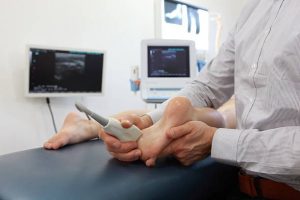When a person suspects hearing loss, they should seek a professional opinion from an audiologist. In Australia, hearing tests can be fully subsidised if you’re eligible for the Australian Government Hearing Services Program.
A hearing test is a series of beeps and whistles played through headphones, starting quietly and increasing in volume. Your audiologist will record your results on a graph called an audiogram. For more information about the hearing test for emergency responders Adelaide, click here.
Diagnostic Hearing Tests
 A full diagnostic hearing assessment is a comprehensive test that gives the audiologist all the information they need to determine possible causes of your hearing loss, assess whether or not you would benefit from wearing hearing aids, and make recommendations on the next steps.
A full diagnostic hearing assessment is a comprehensive test that gives the audiologist all the information they need to determine possible causes of your hearing loss, assess whether or not you would benefit from wearing hearing aids, and make recommendations on the next steps.
This type of hearing test can be fully funded via the Government Hearing Services Program for eligible pensioners and DVA Card holders or can be paid for privately if you don’t have concessions.
The audiologist will play various sounds through headphones, and you will indicate when you hear them. The audiologist will then gradually decrease the sound levels to see how soft you can listen to them. It allows the audiologist to see if your hearing is sensorineural, conductive or mixed (sensorineural plus conductive).
Another Tympanometry test evaluates the middle ear by blowing air into your ear and looking at how your eardrum and middle ear bones move. It can identify blockages or if fluid has accumulated in the middle ear, which may require further medical consultation. For more information about the hearing test for emergency responders Adelaide, click here.
Functional Hearing Tests
In addition to a thorough health history, hearing professionals will ask about your lifestyle and the kinds of work, hobbies, and social situations vital to you. They’ll want to understand how your symptoms affect you and whether they occur in different environments, including noisy ones.
The most common testing is called pure tone audiometry. It involves listening to a range of beeps or whistles (called pure tones) through headphones and telling your audiologist when you hear them. The test finds the softest sound you can hear at each frequency and plots it on an audiogram graph.
This test measures nerve cells’ response to sounds in the inner ear and auditory brainstem. It can also pinpoint where your hearing has been affected along the path from the inner ear to the brain. The test takes a few seconds and is painless. Tympanometry is a quick and simple test that assesses how well your middle ear system is functioning by measuring the movement of your eardrum.
Online Hearing Tests
There are several online hearing tests available for people to take. These tests typically use air conduction to measure your ability to hear sound at different frequencies and volumes. They also ask you questions about your lifestyle and age to help determine if the reduced hearing you’re experiencing is caused by a standard process or something else.
Online tests are very convenient and can be done anywhere with an internet connection. However, they have some inherent drawbacks that make them less accurate than a diagnostic hearing test conducted by an audiologist. The tests can be challenging to do accurately in the comfort of your own home, where there’s a lot of background noise and other distractions that can impact the results.
They also usually only cover a limited number of sound frequencies so the results can be misleading. Still, it’s good if an online hearing test encourages you to seek further diagnosis.
A hearing test checks how well a person can hear sounds of different loudness and pitch. It can detect hearing loss and show how much it affects their quality of life. Getting a hearing test is very important and can be done by a qualified audiologist. Many factors can lead to the loss of hearing. Some people experience sudden hearing loss, while others have gradual hearing loss over time.
When people experience a sudden loss of hearing, they should arrange to see a specialist as soon as possible. An audiologist can determine the cause of the loss and recommend the best treatment. Seeking help from an audiologist is the best thing to do once you suspect that you are experiencing hearing loss.

 Your
Your  Balance training combines static and dynamic exercises to improve body stability, posture, and movement control. The activities are performed thrice weekly in a 45-minute group session for 12 weeks. They include both standing and sitting balance exercises, as well as trunk rotations. The programme has improved balance control, fall-related self-efficacy, fear of falling, walking speed and physical function. The programme is easy to modify for specific conditions, such as those with osteoporosis or arthritis. It could be done before resistance or aerobic exercise and should be included in a comprehensive programme.
Balance training combines static and dynamic exercises to improve body stability, posture, and movement control. The activities are performed thrice weekly in a 45-minute group session for 12 weeks. They include both standing and sitting balance exercises, as well as trunk rotations. The programme has improved balance control, fall-related self-efficacy, fear of falling, walking speed and physical function. The programme is easy to modify for specific conditions, such as those with osteoporosis or arthritis. It could be done before resistance or aerobic exercise and should be included in a comprehensive programme.  Occupational therapy focuses on restoring bodily functions, such as range of motion, strength, and comfort. Occupational therapists also work on reducing pain, increasing range of motion, and improving coordination. The benefits of occupational therapy are numerous. Occupational therapy can help you achieve your goals depending on your condition and your limitations. And because the benefits of occupational therapy are individualized and tailored to your unique situation, you’re sure to see positive results.
Occupational therapy focuses on restoring bodily functions, such as range of motion, strength, and comfort. Occupational therapists also work on reducing pain, increasing range of motion, and improving coordination. The benefits of occupational therapy are numerous. Occupational therapy can help you achieve your goals depending on your condition and your limitations. And because the benefits of occupational therapy are individualized and tailored to your unique situation, you’re sure to see positive results. Before
Before  The-SA-Podiatry-Clinic is a practice run by a podiatrist in Adelaide, South Australia. They provide services ranging from orthotics to rehabilitation. The clinic has several locations around Adelaide. If you’re looking for a podiatrist in Adelaide, you should use the directory listed on the website to find a local practitioner. You can easily add products and services to the directory and improve your ranking in search engines.
The-SA-Podiatry-Clinic is a practice run by a podiatrist in Adelaide, South Australia. They provide services ranging from orthotics to rehabilitation. The clinic has several locations around Adelaide. If you’re looking for a podiatrist in Adelaide, you should use the directory listed on the website to find a local practitioner. You can easily add products and services to the directory and improve your ranking in search engines. Weighted blankets have many benefits. In addition to creating an earthing effect on the body, they also trigger the release of feel-good hormones, such as serotonin, which controls cortisol levels in the blood. By decreasing the level of cortisol, weighted blankets can help combat stress. Stress can affect people of all ages, including kids, and interfere with sleep, digestion, and logical reasoning.
Weighted blankets have many benefits. In addition to creating an earthing effect on the body, they also trigger the release of feel-good hormones, such as serotonin, which controls cortisol levels in the blood. By decreasing the level of cortisol, weighted blankets can help combat stress. Stress can affect people of all ages, including kids, and interfere with sleep, digestion, and logical reasoning.